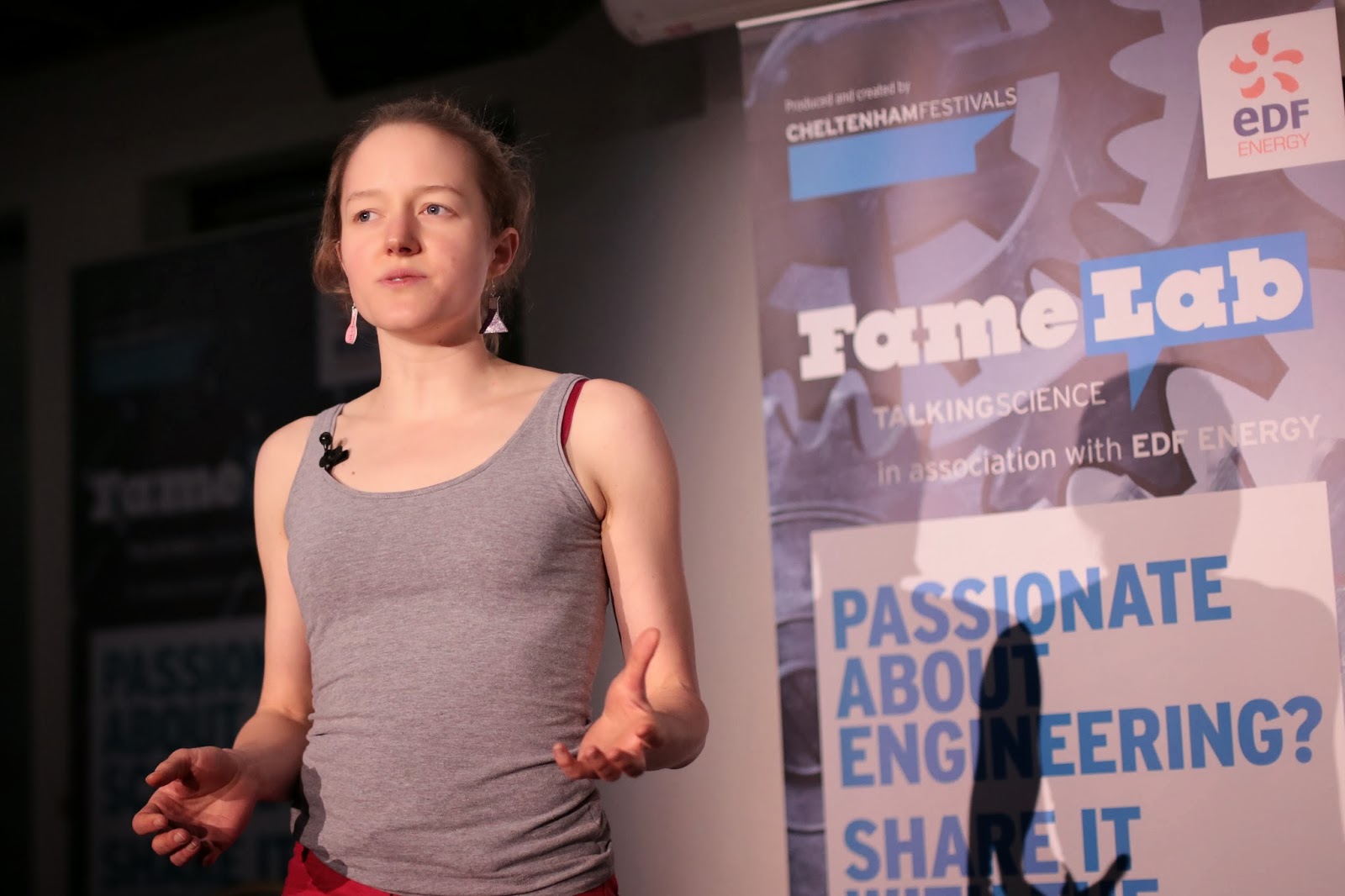As two of the things I love are science and talking, what better way to spend my Valentines night than at the regional final of FameLab 2014? Arriving at the museum of science and industry to a room decorated with marshmallow hearts to a goody bag I knew there was no better option!
The running order showed that I was on 5th out of 9 - and the nerves started to kick in! the range of topics presented was vast: from the dating scene of worms to the use of positrons in medicine. I spoke about energy: where we currently get it from and where we could get it from in the future. My presentation went reasonably well but, as in Birmingham, the judges felt I could have gone for more technical content. Below are a couple of photos from the event and here is a (rather out of focus) video of my presentation, followed by what I was planning to say!!
We use energy for everything: from the calories we eat to the electricity we use to charge up our smartphones. But where does this energy come from? Well, and this might be surprising, here on Earth, all our energy originally comes from the Sun.
But how do we transfer this solar energy into something we can use? Currently, we cheat, and we use these guys: *plant*.
Plants use photosynthesis to convert the radiation from the sun into chemical energy in the sugars that help them grow, making them into tall, green, attractive looking lunches for an animal. Prehistorically, once animals had gone through a lifetime of nibbling at greenery, their bodies became buried under layers of mud and rock. After millions of years of high pressure and temperatures, they decomposed and formed fossil fuels, such as oil or coal. This long and intensive process has converted solar energy into an energy dense material that is really easy for us to transport and burn when we need the energy. However, we are using the Earth's supply of these fossil fuels much quicker than they can be replenished. Therefore, we need to start using alternatives, and harness sunshine in different ways.
So we move on to another form of energy: electrical energy, the movement of electrons inside a material. Silicon has the special property that when it is exposed to sunlight, the radiation knocks electrons out of the molecules. These electrons can then move through the material and, hey presto, we have transferred radiation into electrical energy. This the the process that occurs inside photovoltaic cells, like this one in my calculator. Now this is a form of energy we can use here in the UK. Solar cells work well even in our climate, and we can store the electrical energy in batteries for when it gets dark.
And so this is how we can use the energy from the sun, all on our own, without relying on plants to do our dirty work for us.
The running order showed that I was on 5th out of 9 - and the nerves started to kick in! the range of topics presented was vast: from the dating scene of worms to the use of positrons in medicine. I spoke about energy: where we currently get it from and where we could get it from in the future. My presentation went reasonably well but, as in Birmingham, the judges felt I could have gone for more technical content. Below are a couple of photos from the event and here is a (rather out of focus) video of my presentation, followed by what I was planning to say!!
 |
| © MOSI / Chris Foster Photography |
 |
| © MOSI / Chris Foster Photography |
But how do we transfer this solar energy into something we can use? Currently, we cheat, and we use these guys: *plant*.
Plants use photosynthesis to convert the radiation from the sun into chemical energy in the sugars that help them grow, making them into tall, green, attractive looking lunches for an animal. Prehistorically, once animals had gone through a lifetime of nibbling at greenery, their bodies became buried under layers of mud and rock. After millions of years of high pressure and temperatures, they decomposed and formed fossil fuels, such as oil or coal. This long and intensive process has converted solar energy into an energy dense material that is really easy for us to transport and burn when we need the energy. However, we are using the Earth's supply of these fossil fuels much quicker than they can be replenished. Therefore, we need to start using alternatives, and harness sunshine in different ways.
So we move on to another form of energy: electrical energy, the movement of electrons inside a material. Silicon has the special property that when it is exposed to sunlight, the radiation knocks electrons out of the molecules. These electrons can then move through the material and, hey presto, we have transferred radiation into electrical energy. This the the process that occurs inside photovoltaic cells, like this one in my calculator. Now this is a form of energy we can use here in the UK. Solar cells work well even in our climate, and we can store the electrical energy in batteries for when it gets dark.
And so this is how we can use the energy from the sun, all on our own, without relying on plants to do our dirty work for us.

